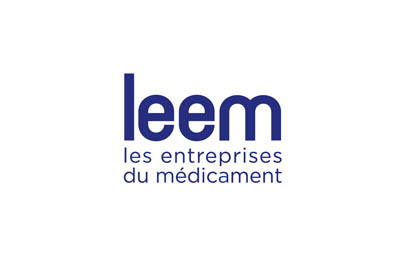The future
of medicine
is bio.
Cell-Free fields of application
Biomedicines or biological drugs include therapeutic molecules and macromolecules produced by living organisms, as opposed to those produced by chemical synthesis. The active substance is produced or extracted from a biological source.
Biomedicines have existed since ancient times, when organ extracts were administered for therapeutic purposes (blood plasma to treat haemorrhages, spinal cord extract to treat CNS diseases, etc.). The first biomedicine developed on an industrial scale was insulin. Initially extracted from the pancreas of cattle or pigs, it has been produced recombinantly from bacteria since the 1980s. Today, biomedicines include a wide variety of products (see Figure 1).
Diversity of biomedicines
Figure 1:
NUCLEIC ACIDS
DNA or RNA vaccines
Gene therapies
PROTEINS
Subunit vaccines
Enzymes
Growth factors
Protein Hormones
Therapeutic antibodies
SUGARS
Heparin
A market in expansion
Biomedicine is a growing field, shown by the increasing number of publications on the subject, and new developments are being achieved with the integration of state-of-art technologies. In 2023, 59% of all molecules under development in the world were biomedicines, with 26% already in clinical trials. Around 22,000 biotherapy products (with a specific indication) were under development (Figure 2) ([1].
Figure 2 – Biomedicines (molecules and biotherapies) under development in the world in 2023. Reproduced from [1].
In the world
Molecules en under development / 9 931 companies – 37 775 products.
- R&D 27%
- Phase III 4%
- Phase II 11%
- Phase I 11%
- Preclinical 47%
- % of molecules under developmentare biomedicines 59%
In Europe, the top 3 treatment areas using marketed biomedicines were infectious diseases, oncology and metabolic disorders, and the main products were therapeutic proteins, peptides and biopolymers, followed by vaccines (Figure 3) [1].
Figure 3 – Types of biomedicines marketed in Europe in 2023. Reproduced from [1].
511 therapeutic proteins, peptides and biopolymers
158 vaccines
21 advanced therapy medicinal products
These 690 “unique” biomedicines actually correspond to 4 316 products in a specific indication, with marketing authorisation and marketed in France.
The development of biomedicines includes a number of stages starting with the identification of therapeutic targets, in which the screening and selection of biomedicinal leads occur.
These leads are then optimized together with their production system. The selected biomedicines are then subjected to preclinical and clinical evaluation before being approved for marketing.
The stages in the development of biomedicines
1/ Target discovery
Program determination.
Target dentification.
Target validation.
2/ Molecule screening
Virtual screening.
Test development.
High throughput screening.
Molecule design.
Selection of high potential molecules.
3/ Optimization of the selected molecules
Sequence optimization.
ADME prediction.
Production optimization.
4/ Evaluation of candidates (pre-clinical)
ADME.
Efficacy.
Safety.
5/ Clinical trials
Phase I.
Phase II.
Phase III.
6/ Review and approval
Challenges
Biomedicines research is now facing global challenges such as
. the increase of bacterial resistance to antibiotics and the occurrence of superbugs, which entails the development of alternative and effective antimicrobial treatments and vaccines;
. the need for faster processes for the discovery of new drugs and for faster clinical trial procedures that will allow a shortening of the required time for the development and validation of new medicines, which can be achieved with the help of generative artificial intelligence and high-throughput experimental validation;
. and the increased frequency of vaccination, for example with the periodic flu and COVID-19 re-vaccination, and also the development of mRNA personalized vaccines to treat diseases like cancer, that requires new developments in the mRNA technology to improve precision and personalized therapies. All these challenges demand for effective and powerful analytical instruments and new drug discovery methods.
Cell-free applications in biomedicines
Cell-free protein synthesis (CFPS) methodology efficiently addresses the challenges in biomedicines production. This technology is able to produce a large diversity of molecules that can be used as biomedicines, namely antibodies and antibody derivatives, antibody-drug conjugates, cytokines, vaccines and viral proteins [2-4], and cell-free derived products showed to be effective in oncology and infectious diseases applications.
For instance, bacteriophages produced in cell-free systems have shown to be potent therapeutics for antibiotic-resistant bacteria [5], and an antibody-drug conjugate comprised by a tubulin inhibitor monomethyl-auristatin-F (MMAF) and a fusion protein (composed of a human Fc domain and a cystine knot miniprotein) was engineered to bind with high affinity to tumor-associated integrin receptors [6]. The fusion protein was expressed by CFPS, during which a non-natural amino acid was introduced into the Fc domain and subsequently used for site-specific conjugation of MMAF through a noncleavable linker.
Furthermore, the cell-free protein production approach allows for high-throughput production of protein libraries and experimental screening in a way that is not feasible in cell-based production, enabling a rapid optimization of the cell-free produced protein [7,8]. Moreover, CFPS platforms are ideal to accelerate the discovery and development of novel biomedicines through the use of artificial intelligence, as cell-free systems allow to experimentally validate, in a rapid way, the thousands of new purpose-built molecules generated by deep learning [9].
SYNTHELIS is proud to participate in a state-sponsored biomedical research program, the “Grand defi” (the Great Challenge) which aims to improve the yields and reduce production costs associated with biomedicine production.
The “iCFree” program, carried out in collaboration with the MICALIS, CARMEN and I2BC Institutes, aims to develop cell-free protein production systems. These cell-free systems are optimized by “machine-learning” methods for the production of therapeutic products that are difficult to obtain in vivo, such as antimicrobial proteins.
Publications
References
To know more

Biodrugs (pdf)
Cell‑Free Protein Synthesis: A Promising Option for Future Drug Development

Research project designed for Sanofi Pasteur (pdf)
Solubilisation of a strongly aggregated vaccine antigen

Government - France (pdf)
"New expression systems" of the great biomedical challenge

Leem - Biotech Committee (pdf)
Biomedicines in France : state of play
We look
forward to
your questions
Even
a protein
needs
to express
its potential.
Cell-Free Systems Applications
